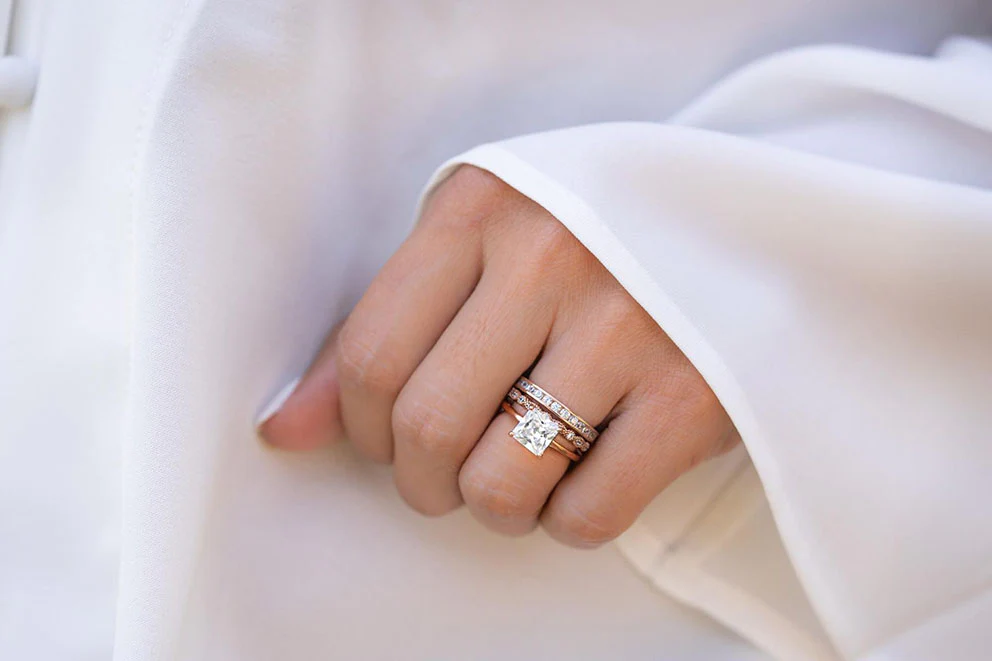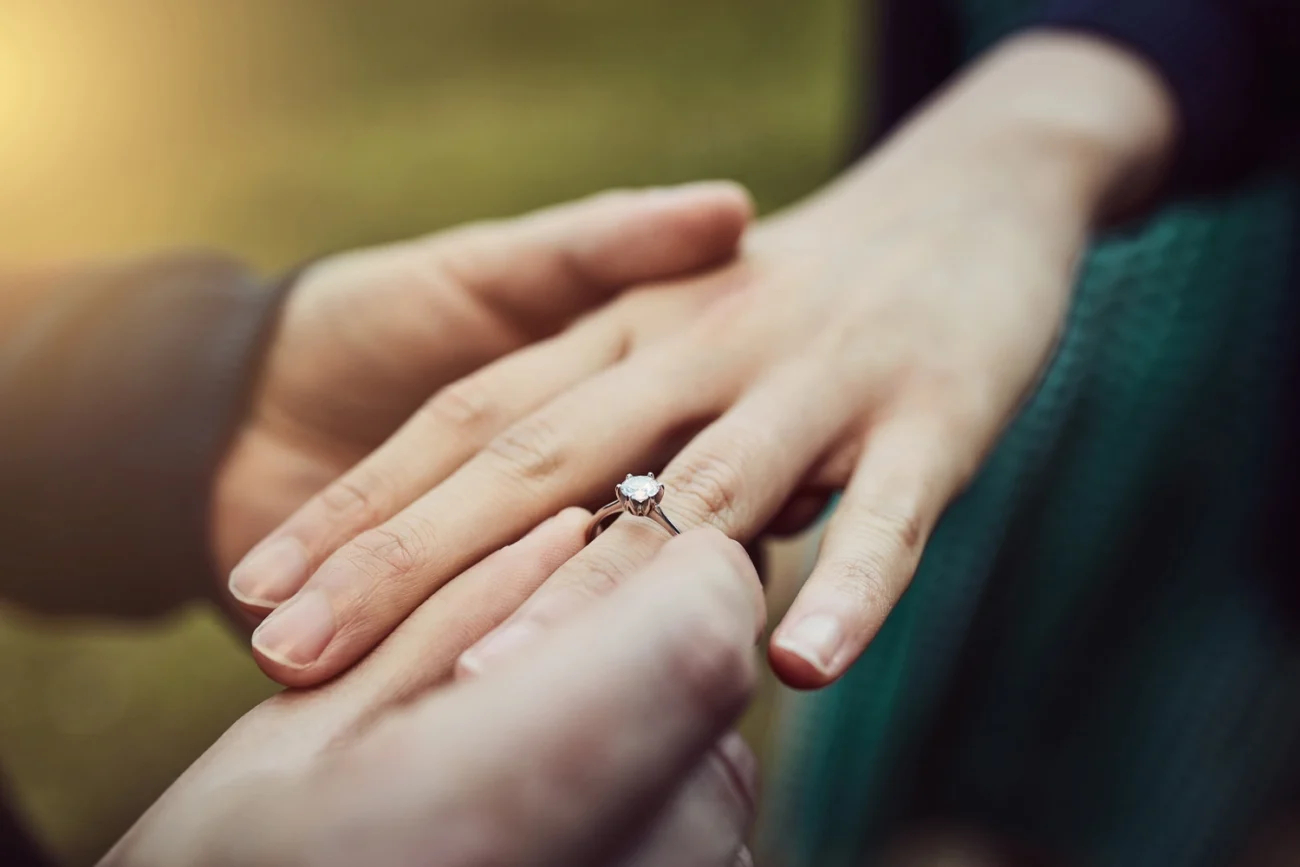When it comes to engagement rings, traditions have evolved. What was once considered the norm may no longer align with modern sensibilities. The era of rigid rules dictating how, when, and what to wear on your left ring finger has evolved, making room for new norms and personal expression.
So, if you’re about to get engaged or simply curious about the changing norms, it’s essential that you get familiar with the outdated engagement ring etiquette rules and consider breaking them.
The Bigger, the Better Myth
Many used to believe that the engagement ring’s size directly correlated with the depth of your partner’s love. This led to an unhealthy fixation on larger and more expensive stones, causing undue stress for couples.
It’s high time to break free from this unrealistic expectation. The actual value of an engagement ring isn’t in its size but in the love and commitment it represents. Focus on what is affordable and meaningful to both of you. A smaller, thoughtfully chosen ring can be just as special.
The “Three Months’ Salary” Rule

A common guideline suggests a prospective groom should spend at least three months’ salary on an engagement ring. This rule puts undue financial pressure on couples.
Determining the ideal budget for an engagement ring isn’t a universal formula. Instead, consider your financial circumstances and choose an amount that aligns with your comfort zone. You don’t need to strain your finances to find a meaningful ring; its significance should represent your affection, not your financial capacity.
The Surprise Proposal
Tradition dictated that the proposal should be a complete surprise, including the choice of the ring. While the element of surprise can be delightful, it can also lead to awkward moments if the ring doesn’t match the recipient’s style.
You and your partner must be on the same page regarding the proposal. Instead of opting for a complete surprise, consider discussing ring preferences and styles with your partner. This ensures that the ring you choose reflects their tastes and makes the proposal even more special.
The Diamond-Only Standard
For many years, the diamond reigned supreme as the only acceptable choice for an engagement ring. The belief was that diamonds were a symbol of enduring love.
The world of gemstones is vast and beautiful. You don’t have to limit yourself to just diamonds. Embrace alternative gemstones like sapphires, emeralds, or even unique-coloured diamonds. These options can add a personal touch to the ring and make it stand out. The jeweller is one of the most important factors to consider when purchasing a ring. Work with a reputable custom jeweller like Alexis Gallery and share your vision with their collaborative team. Their team of experts can help you explore diamonds and alternative gemstones, allowing you to make a decision based on your unique taste and needs.
The Solo Responsibility

Traditionally, selecting and purchasing the engagement ring solely fell on the person proposing, typically the groom-to-be. This rule overlooked the importance of the recipient’s input.
Choosing an engagement ring should be a joint decision. This ensures that the recipient loves the ring and signifies the partnership that lies ahead. Shopping for the ring together can be an enjoyable and bonding experience. Today, more couples are choosing to take the first step towards their engagement together. According to a Brides article, “62 percent of couples now go engagement ring shopping together.”
Although you don’t necessarily have to do this if you want an element of surprise in the process, it’s important to note that communication is key in any relationship.
In a rapidly changing world, it’s essential to recognize that engagement ring etiquette is also evolving. Breaking these outdated rules can lead to a more personal and meaningful experience when choosing an engagement ring.




